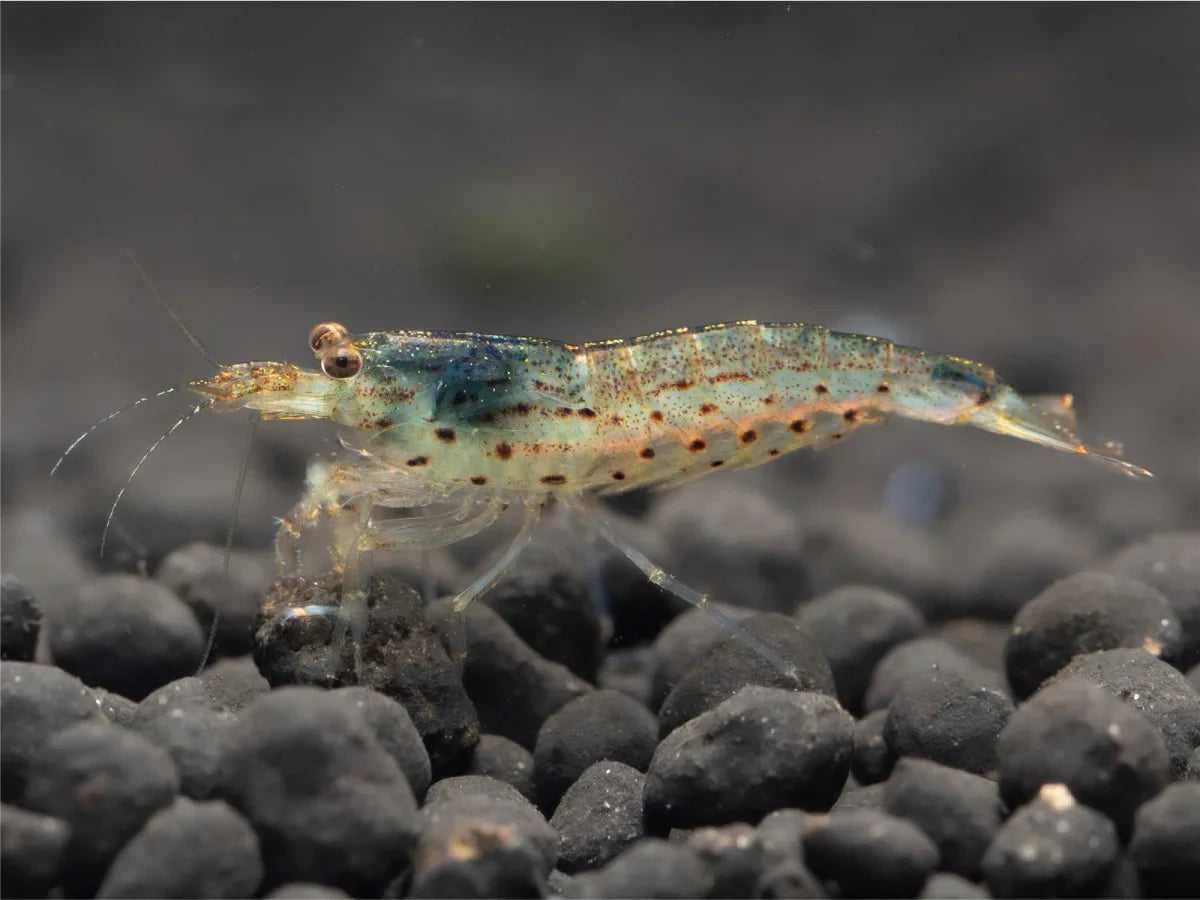AquariumAquaristik
Amano Shrimp - Caridina multidentata
Amano Shrimp - Caridina multidentata
Couldn't load pickup availability
The Amano shrimp ( Caridina multidentata ), named after the well-known aquascaping pioneer Takashi Amano, is an extremely popular shrimp species in the aquarium hobby. It is particularly known for its excellent algae-eating abilities and is often used in planted aquariums to control algae growth.
Characteristics:
- Size : The Amano shrimp is one of the larger dwarf shrimp species and can reach a length of up to 5 cm. Females are usually larger than males.
- Coloration : It has a transparent body coloration with small, dot-shaped, brown or grayish spots along the sides. The belly area can be slightly milky and the antennae and legs are colorless or slightly transparent.
- Behavior : The Amano shrimp is very active and constantly searching for food, especially algae. It is a peaceful species that gets along well with other shrimp and small fish in a community tank.
Attitude:
- Aquarium size : For a small group of Amano shrimp, an aquarium of at least 30 liters is recommended. It should be well planted and offer plenty of hiding places, as they like to retreat.
- Water values : The Amano shrimp prefers slightly acidic to neutral water with a pH value of 6.0 to 7.5 and temperatures between 18 and 26 °C. It is relatively adaptable, but stable water values are crucial for its well-being.
- Food : In addition to algae, the Amano shrimp also eats detritus, dead plant parts and special shrimp food. If algae growth is insufficient, you can feed them algae leaves and food tablets.
- Reproduction : Breeding the Amano shrimp is almost impossible in freshwater aquariums, as the larvae can only develop in brackish water. While the females carry many eggs, the larvae only hatch in special, salty waters.
Special features:
The Amano shrimp is known for its ability to eat even stubborn algae, such as thread algae and brush algae, making it an ideal addition to planted aquariums. It is not only useful for tank maintenance, but its active behavior is also interesting to observe. Due to its size and useful characteristics, it is very popular with both beginners and experienced aquarists.


